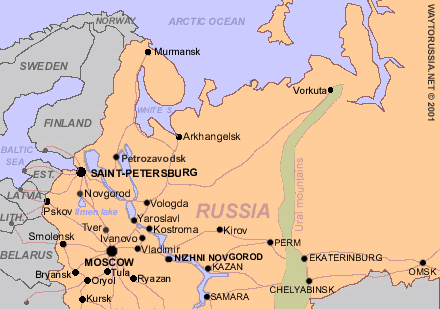General Facts about St. Petersburg
Where Is It?

Orientation
The city is situated on the banks and islands of Neva river and Gulf of Finland. Peter the Great was a great fan of Amserdam and that 's why in St. Petersburg there are many natural and man-made canals and islands. City center is well organised, all the streets are perpendicular.
The main and the oldest street in St. Petersburg, is called Nevsky Prospect, there's the main railway station in city on this street, a lot of shops, cafes, hotels, and tourist sights. The street is 4.5 km long.
The area around Nevsky Prospekt is much calmer, and is a great place to walk around too. There are many museums, beautiful sights, little cozy cafes and restaurants.
Vasilievsky island, which is to the west of Nevsky Prospekt street, is a quiet residential area. On this island there are located St. Petersburg State University faculties and campus, so there are many places to walk around and inexpensive places to eat.
Climate in St. Petersburg
Weather conditions of St. Petersburg are far from ideal. St.Petersburg has a humid continental climate of the cool summer subtype. Winters are long and the temperature may vary between 0 to -30 C degress, while summers are short and humid with just several days of real heat. The weather can change several times a day. The day length in St. Petersburg varies across seasons. The end of May - beginning of July is so called White Nights period, when it doesn't get dark during the night and the twillight might last all night,.
Average weather in Piter (celsius): January -8 | February -8 | March -4 | April +4 | May +9 | June +15 | July +17 | August +16 | September +11 | October +5 | November -1 | December -5
Practicalities.
For practical information about St. Petersburg (accommodation, city guides, business travel, shopping, health and much more) see the Practicalities section of our site.



